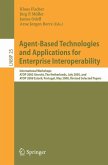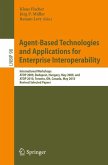The present book describes the methodology to set up agent-based models and to study emerging patterns in complex adaptive systems resulting from multi-agent interaction. It offers the application of agent-based models in demography, social and economic sciences and environmental sciences. Examples include population dynamics, evolution of social norms, communication structures, patterns in eco-systems and socio-biology, natural resource management, spread of diseases and development processes. It presents and combines different approaches how to implement agent-based computational models and tools in an integrative manner that can be extended to other cases.
Hinweis: Dieser Artikel kann nur an eine deutsche Lieferadresse ausgeliefert werden.
Hinweis: Dieser Artikel kann nur an eine deutsche Lieferadresse ausgeliefert werden.
From the reviews:
"Presenting and combining different approaches, the aim of the book is to describe the motivation for setting-up agent-based models and for studying emerging patterns in complex adaptive systems. ... is well written and contains much useful information for scholars not familiar with agent-based modelling." (Petra Ahrweiler, Journal of Artificial Societies and Social Simulation, April, 2007)
"Presenting and combining different approaches, the aim of the book is to describe the motivation for setting-up agent-based models and for studying emerging patterns in complex adaptive systems. ... is well written and contains much useful information for scholars not familiar with agent-based modelling." (Petra Ahrweiler, Journal of Artificial Societies and Social Simulation, April, 2007)








